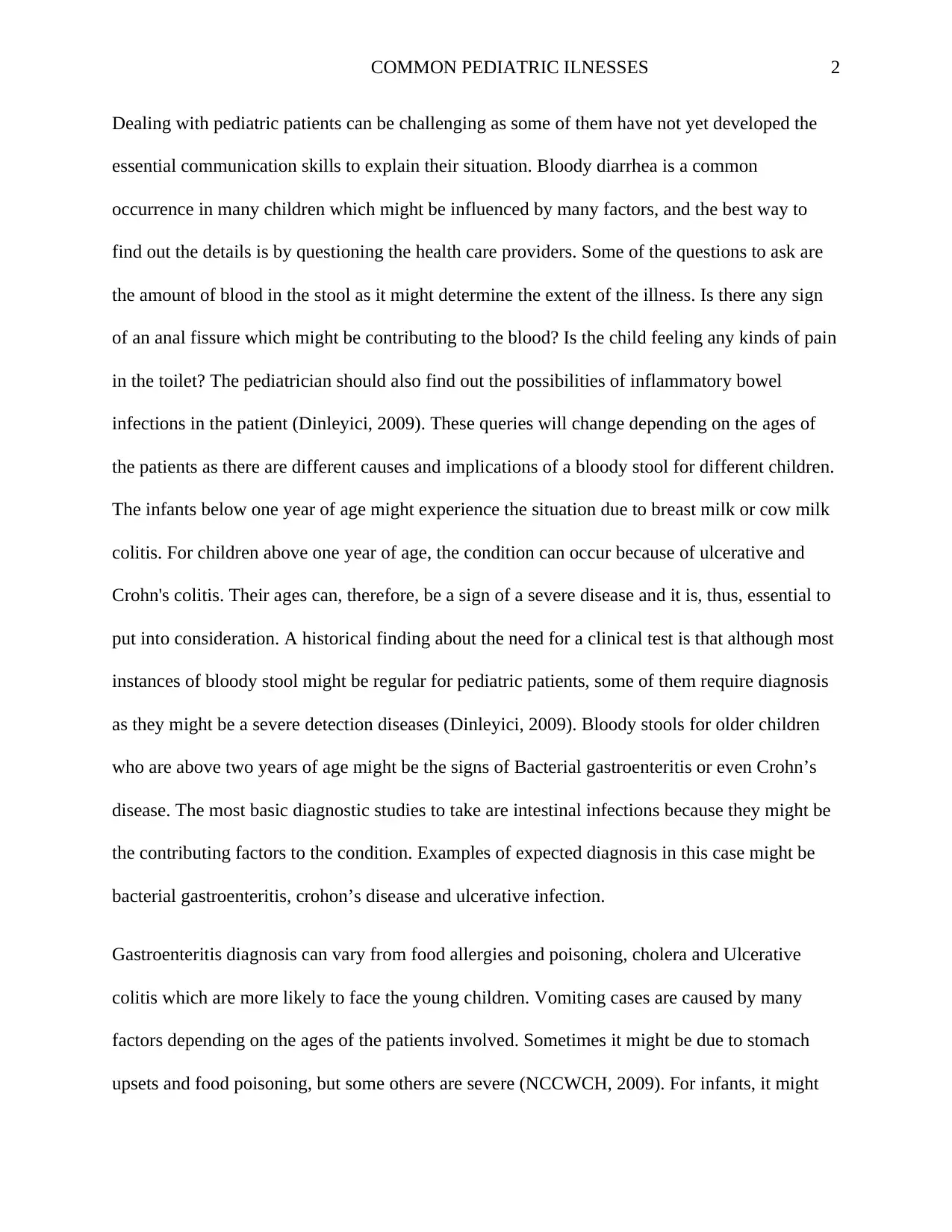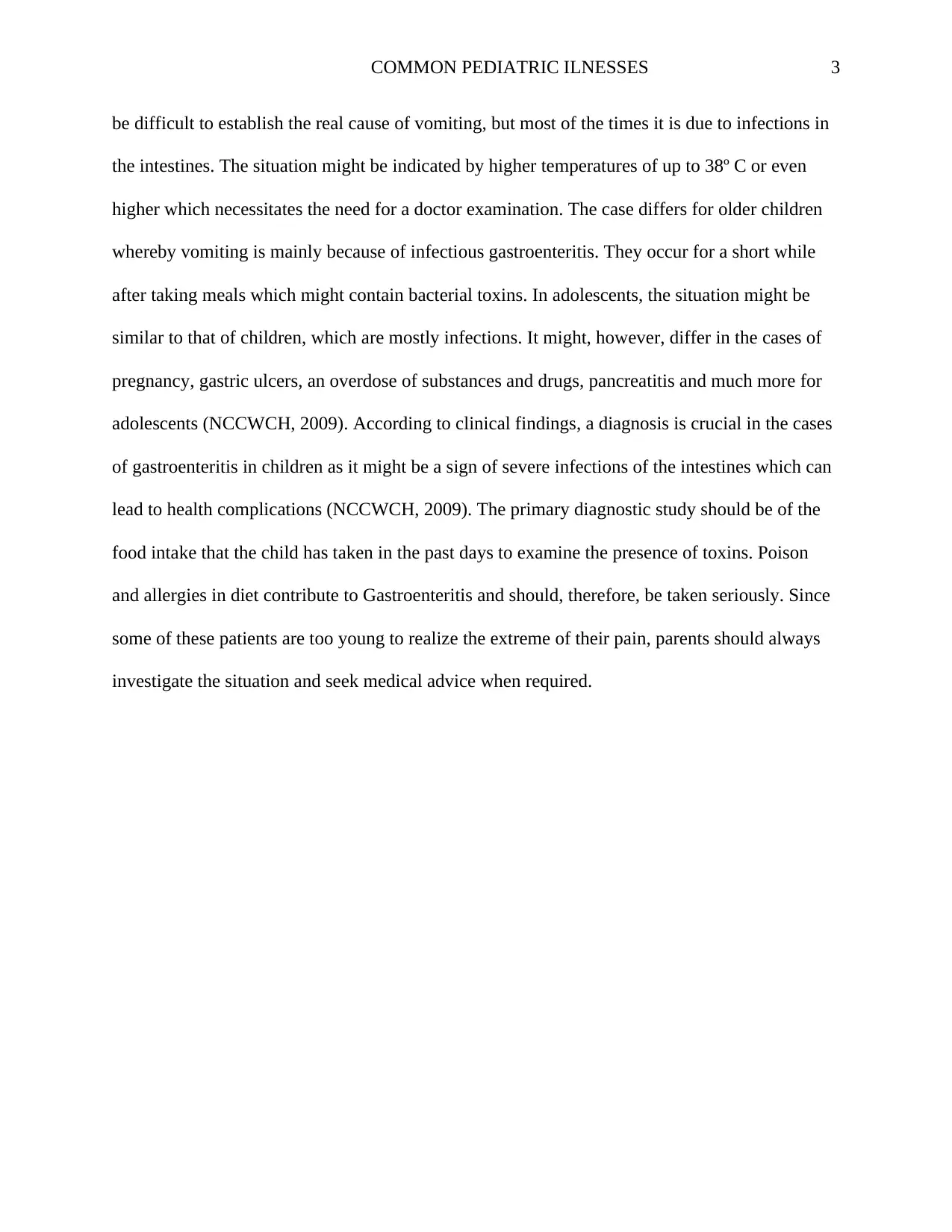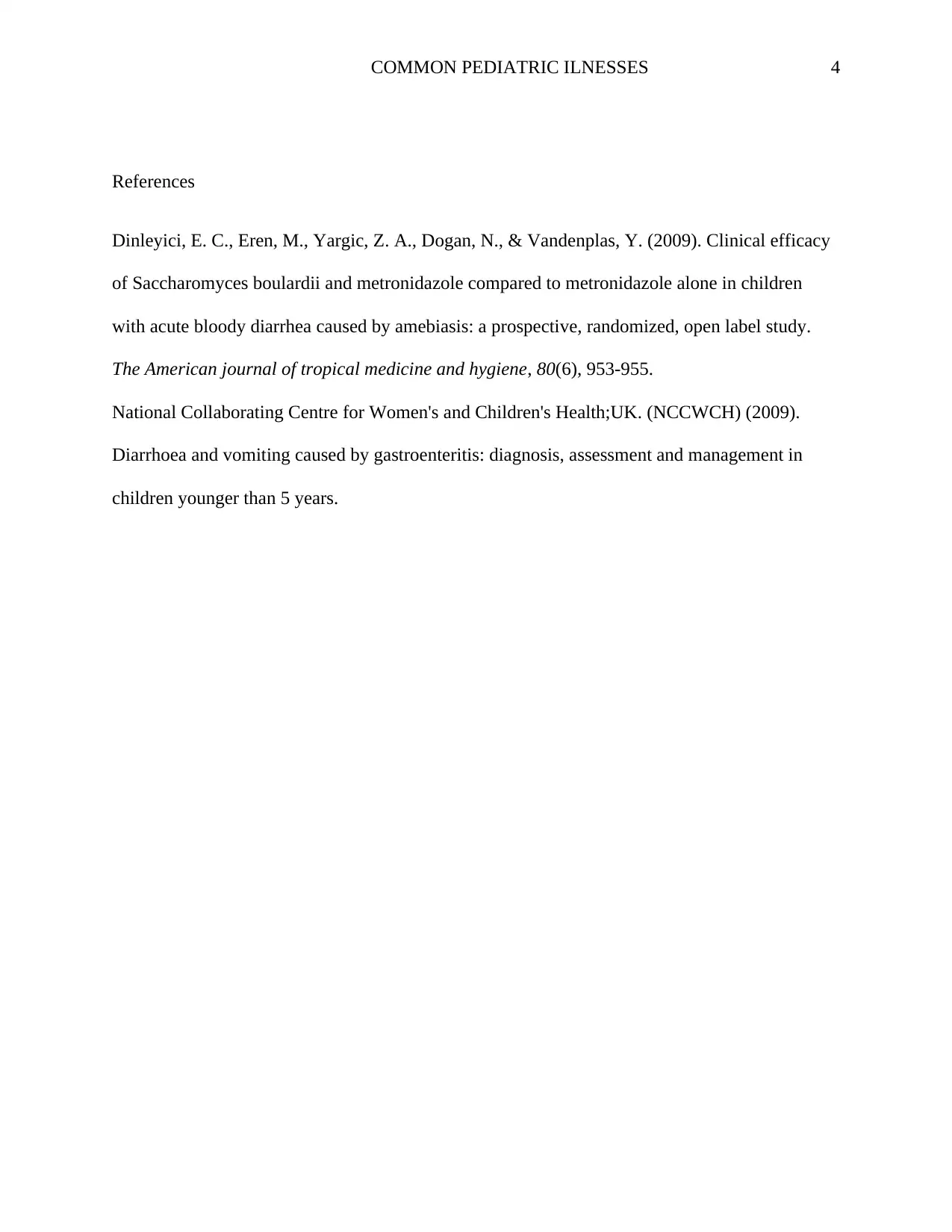Pediatric Illnesses: Diagnostic Studies and Treatment Report
VerifiedAdded on 2020/04/21
|4
|774
|93
Report
AI Summary
This report delves into the complexities of common pediatric illnesses, focusing on bloody diarrhea and vomiting in children. It highlights the importance of effective communication with pediatric patients and the need for thorough questioning to determine the underlying causes of these conditions. The report emphasizes the significance of considering the patient's age, as different age groups may experience these illnesses due to varying factors such as breast milk or cow milk colitis in infants and bacterial gastroenteritis in older children. It also discusses the crucial role of diagnostic studies, including intestinal infection tests, in identifying the root causes of these illnesses and differentiating between various conditions, such as gastroenteritis, Crohn's disease, and ulcerative colitis. The report underlines the need for parents to be vigilant and seek medical advice when necessary, given that young children may not be able to express the severity of their pain. The report concludes with references to support the clinical findings and recommendations.
1 out of 4











![[object Object]](/_next/static/media/star-bottom.7253800d.svg)